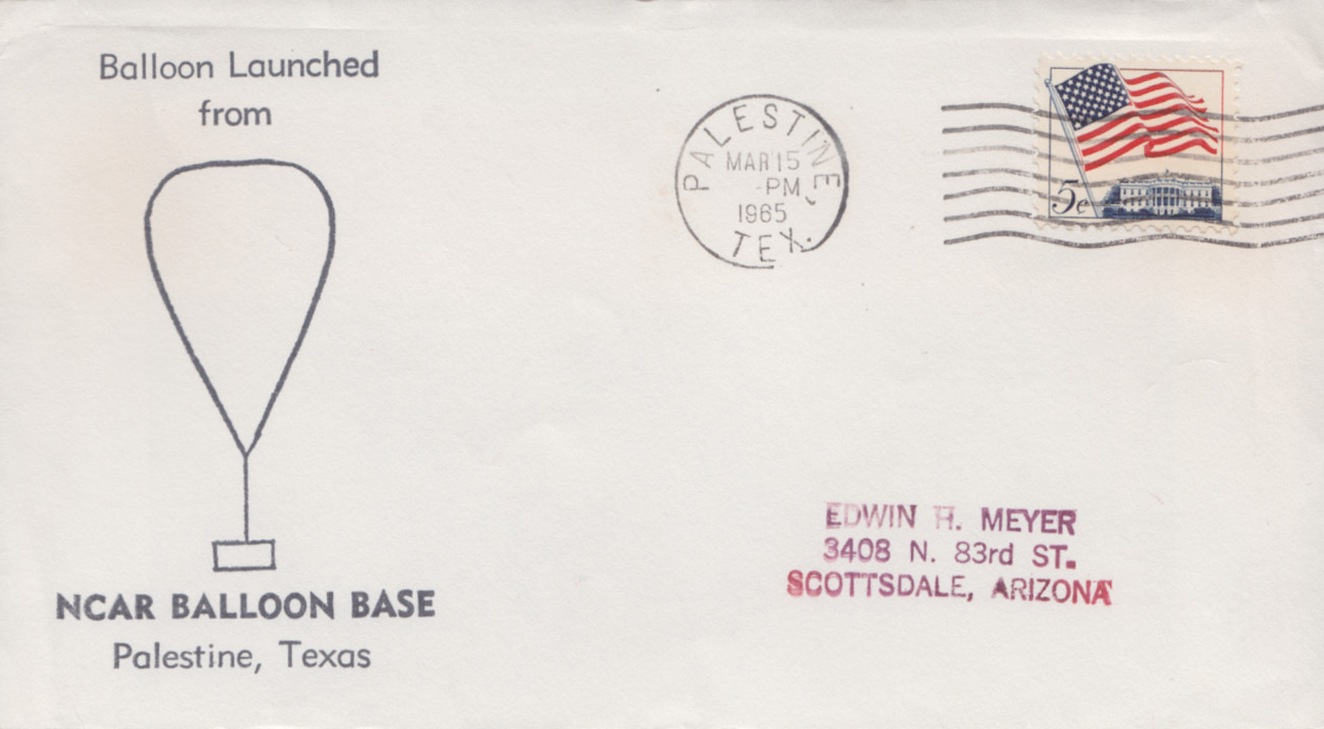Purpose of the flight and payload description
The objective of the flight was to obtain atmospheric air samples during a stratospheric balloon in the stratosphere. The instrument -a whole air sampler- was developed in the decade of 1960 by the National Center for Atmospheric Research in Boulder, Colorado. It flew in several balloon missions between 1965 and 1974.
The whole air sampling technique involves taking an air sample into a suitable container (ideally without fractionation of its constituents). This can be accomplished in several ways, the simplest being to expose a previously evacuated container to ambient air, and after pressure equilibration, to close it. In this way a so-called "grab sample" is obtained for which the sample pressure is that of ambient air at sampling altitude. Because of its simplicity grab sampling can be carried out on any vehicle, aircraft, balloon, or rocket and the method has been used widely.
To obtain the vertical profiles a grab sampler was carried by balloon to an altitude of 30 km and opened at different altitudes during descent. The balloon sampling train is shown in the figure at left. The gas sampling device, consisted of eight evacuated bottles which could be connected in turn to a sampling manifold by a rotary valve. Prior to opening the bottles to the atmosphere, the manifold was flushed about 20 times with ambient air by a small pump, and the residual pressure (if any) in the bottles was measured by thermocouple gauges. The bottles were constructed by welding the mouths of two 2 liter stainless steel beakers together. An inlet to this bottle was provided by a 0.63 cm outer diameter spigot and a small instrument type valve was used to isolate the bottles from the sampler. The material used was stainless steel.
The payload was suspended about 150 m below the balloon to prevent contamination with the helium vented by the balloon. To reduce contamination from the gondola itself, the sample intake was located about 6 m below and the inlet line was flushed about 20 times prior to sampling using a liquid Nitrogen cooled adsorption pump. As an additional precaution sampling was done during descent only. This virtually eliminated any external contamination.
Details of the balloon flight
Balloon launched on: 3/15/1965 at 6:51 cst
Launch site: Columbia Scientific Balloon Facility, Palestine, Texas, US
Balloon launched by: NCAR National Scientific Balloon Flight Station
Balloon manufacturer/size/composition: Zero Pressure Balloon Raven 360.000 cuft (1.5 MIL.)
Balloon serial number: RAVEN 2323-261-397 SN Nº 150
Flight identification number: 110P
End of flight (L for landing time, W for last contact, otherwise termination time): 3/6/1965
Balloon flight duration (F: time at float only, otherwise total flight time in d:days / h:hours or m:minutes - ): F 3 h
Landing site: 10 miles WNW of Newellton, Louisiana, US
Payload weight: 733 lbs
The balloon was launched by dynamic method from the NCAR Balloon Launch Station of Palestine, Texas on 15 March 1965 at 6:51 CST. The gas sampler was installed on the balloon gondola to obtain a profile of air samples in the vicinity of Louisiana. It ascended to a height of 24 kilometers where the surface of the balloon was allowed to degas for two hours. The balloon and gondola was then commanded to descend and samples were collected at selected altitudes between 24 and 9 km. The balloon trajectory was approximately due east and the cutdown occurred in the vicinity of the Mississippi River with landing 10 miles WNW of Newellton, Louisiana.
Postal cover issued on launch day commemorating the flight

External references
- Measurements of methane in the troposphere and lower stratosphere Tellus, 18: 221-225
- NCAR Scientific Balloon Facility Annual Report, 1965 National Center for Atmospheric Research, January 1966
- The concentration of molecular H2 and CH4 in the stratosphere Pure and Applied Geophysics volume 106, pag. 1352 (1973)
- The Flight Record Scientific Ballooning, May 1965
- Vertical profiles of CH4 in the troposphere and stratosphere J. Geophys. Res., 78 (24), 5265 (1973)
- Vertical profiles of molecular H2 and CH4 in the stratosphere AIAA Paper, No. 73-518, AIAA/AMS International Conference on the Environmental Impact of Aerospace Operations in the High Atmosphere, Denver, Colorado, June 1973
3800If you consider this website interesting or useful, you can help me to keep it up and running with a small donation to cover the operational costs. Just the equivalent of the price of a cup of coffee helps a lot.


